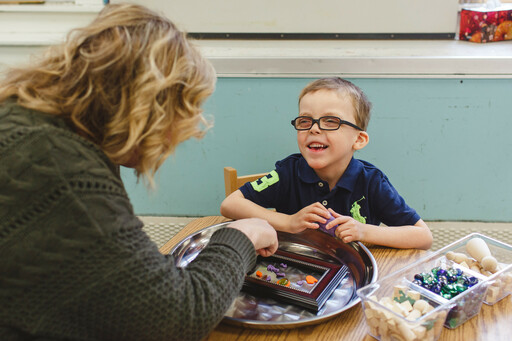This week, our Kimochis® Start School series, produced by Strathcona County’s Family Resource Network and Mental Health Capacity Building team, continues with a three-minute video for you and your child to watch together about Lovey Dove, one of the Kimochi® characters. Lovey Dove teaches us about the easy-to-have feeling of kindness. Sometimes, it can be hard to remember to be kind, but usually when we’re kind, it feels good! Studies suggest being kind to others positively impacts our own mental health. It can sometimes be hard to see kindness with all that’s going on in our world, so being intentional about looking for kindness and being kind can make a big difference for both others and ourselves!
This week, we have suggestions from the EIPS speech language pathology team related to building language. Oral language is a critical part of school readiness. These tips are applicable to language users of all levels.
Engaging Children in Conversations
Conversations are fundamental to children’s speech language learning as well as their social and cognitive development. While this five-minute video focuses on strategies for teachers and school staff, the strategies presented are also very important for a child’s caregivers. Here are some practical strategies caregivers can use in everyday interactions to support their child’s speech and language development.
Strategies:
- Get on your child’s level: To establish a good connection, get on your child’s level and be face-to-face. This allows your child to get important information from your facial expression, eyes and to see how you’re forming speech sounds. Being face-to-face also helps you tune into subtle cues about your child’s interests, thoughts and feelings.
Note: Being face-to-face is different than making “eye contact.” Establishing eye contact is very difficult for some children and should not be required when that’s the case.
- Watch and listen: Watching and listening allows caregivers to tune into their child’s interests and ideas. Conversations that focus on activities or topics your child is interested in are much more likely to be engaging for your child.
- Take turns: Take a turn and then wait for your child to fill their turn either with actions, expressions or words.
- Pause and wait: After you’ve taken your turn in the conversation, wait expectantly for your child to take their turn. Some children need extra time to think about their turn. Other children may need a subtle cue that they’re expected to respond. Wait time is crucial to enable children to be active participants in conversations.
- Respond: Respond to your child’s turn with a comment or question. You can repeat what your child has said for clarification, and you can expand their idea with your own ideas.
- Match and model more: Match your child’s level of communication and model one step above. For example, if your child is saying three-word sentences, expand to add a few more words.
- Respond to your child’s feelings and enthusiasm: Acknowledge feelings by labeling and reflecting them back to your child. If your child tends to be quiet and reserved, be enthusiastic however not over the top. If your child tends to get very excited, show your excitement and help them regulate by being a little bit calmer.
- Have fun!! Conversations help us make an important connection with our children and learn about their interests and abilities. Conversations also help caregivers foster their children’s speech and language, cognitive and social development. Most importantly, conversations with children are a time to have fun!
Interested in learning more about speech and language development? These resources are a great place to start!
Alberta Health Services
The Hanen Centre Parent Articles



